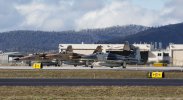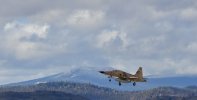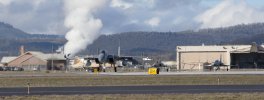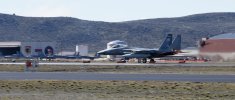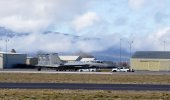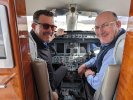-
Please take a moment and update your account profile. If you have an updated account profile with basic information on why you are on Air Warriors it will help other people respond to your posts. How do you update your profile you ask?
Go here:
Edit Account Details and Profile
You are using an out of date browser. It may not display this or other websites correctly.
You should upgrade or use an alternative browser.
You should upgrade or use an alternative browser.
Random Griz Aviation Musings
- Thread starter Griz882
- Start date
I think they wanted to teach the students under the fly-faster model…at least faster then the T-34. Kind of like the first CQ launch, turn downwind, then trap. My first trip around the pattern in the Prowler, I think I was hanging on to the tail stab. What a fast pace rush.I still don’t understand why that T-1 syllabus existed. I remember having 5ish flights and then brain dumping everything enroute to VT-86.
When I was OPSO at VT86, we lost a T-39, and while the jet was down, we did pure sim instruction. It was difficult for both the students and instructors. No flight time is not good.There is a move afoot to move the T-1A out of service all together. No replacement exists and I believe the intent is to replace its use with a pure simulator syllabus for both pilot multi-engine transition training as well as CSO training. The concept is meeting with some resistance but ultimately budget dollars will do the talking. I've read that the new version of upt is sufficient that a pilot coming out of the T-6 can go directly into a tanker or transport aircraft and transition successfully with no intermediate platform needed to learn multi-engine fundamentals.
There is a move afoot to move the T-1A out of service all together. No replacement exists and I believe the intent is to replace its use with a pure simulator syllabus for both pilot multi-engine transition training as well as CSO training. The concept is meeting with some resistance but ultimately budget dollars will do the talking. I've read that the new version of upt is sufficient that a pilot coming out of the T-6 can go directly into a tanker or transport aircraft and transition successfully with no intermediate platform needed to learn multi-engine fundamentals.
Yeah, that will work. Big blue is also trying to fly tankers and cargo single pilot with a co-pilot sitting in a box with remote controls.
But hey let's save .03 cents.
The power of social media in aviation.
T-6A VT-10 Student NFO syllabus flight with IP in front seat. Canopy comes unlatched after takeoff. IP keeps his cool and brings it back for uneventful landing at KNPA. "Don't touch anything" = don't you dare command eject us!
T-6A VT-10 Student NFO syllabus flight with IP in front seat. Canopy comes unlatched after takeoff. IP keeps his cool and brings it back for uneventful landing at KNPA. "Don't touch anything" = don't you dare command eject us!
Last edited:
With sim technology I see no reason to fly around in a little jet that doesn’t handle anything like a transport size aircraft. I came from a fighter, trained in a sim and did my first landing in an actual airliner with a full load of paying passengers. CRM and crew coordination can be more effectively trained in a sim.There is a move afoot to move the T-1A out of service all together. No replacement exists and I believe the intent is to replace its use with a pure simulator syllabus for both pilot multi-engine transition training as well as CSO training. The concept is meeting with some resistance but ultimately budget dollars will do the talking. I've read that the new version of upt is sufficient that a pilot coming out of the T-6 can go directly into a tanker or transport aircraft and transition successfully with no intermediate platform needed to learn multi-engine fundamentals.
But to be fair, you had lots of hours behind you, whereas, a new trainee does not. How would a pilot fair with, let's say, 50 actual flight hours under sim only to big wing?With sim technology I see no reason to fly around in a little jet that doesn’t handle anything like a transport size aircraft. I came from a fighter, trained in a sim and did my first landing in an actual airliner with a full load of paying passengers. CRM and crew coordination can be more effectively trained in a sim.
This is a decent point. It is telling that the program applies to transport type aircraft, but not bombers. I’m not sure if it applies to Hercs.But to be fair, you had lots of hours behind you, whereas, a new trainee does not. How would a pilot fair with, let's say, 50 actual flight hours under sim only to big wing?


